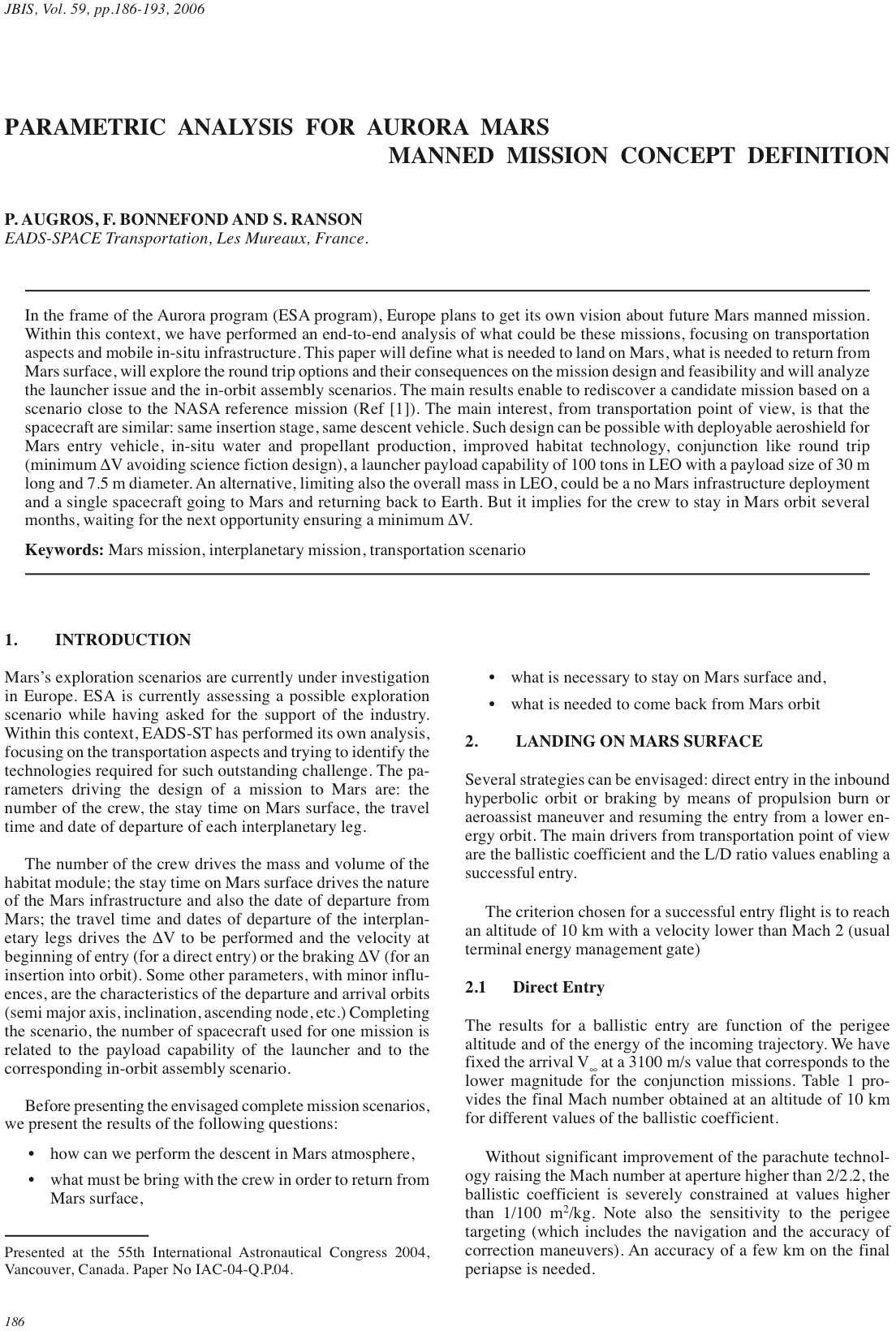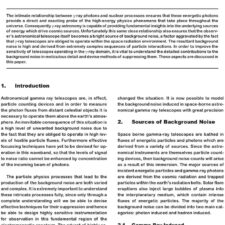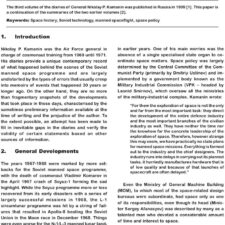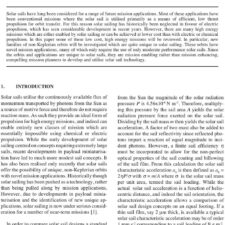Parametric Analysis for Aurora Mars Manned Mission Concept Definition
£5.00
P. Augros; F. Bonnefond; S. Ranson (2006), JBIS, 59, 186-193
Refcode: 2006.59.186
Keywords: Mars mission, interplanetary mission, transportation scenario
Abstract:
In the frame of the Aurora program (ESA program), Europe plans to get its own vision about future Mars manned mission. Within this context, we have performed an end-to-end analysis of what could be these missions, focusing on transportation aspects and mobile in-situ infrastructure. This paper will define what is needed to land on Mars, what is needed to return from Mars surface, will explore the round trip options and their consequences on the mission design and feasibility and will analyse the launcher issue and the in-orbit assembly scenarios. The main results enable to rediscover a candidate mission based on a scenario close to the NASA reference mission (Ref [1]). The main interest, from transportation point of view, is that the spacecraft are similar: same insertion stage, same descent vehicle. Such design can be possible with deployable aeroshield for Mars entry vehicle, in-situ water and propellant production, improved habitat technology, conjunction like round trip (minimum V avoiding science fiction design), a launcher payload capability of 100 tons in LEO with a payload size of 30 m long and 7.5 m diameter. An alternative, limiting also the overall mass in LEO, could be a no Mars infrastructure deployment and a single spacecraft going to Mars and returning back to Earth. But it implies for the crew to stay in Mars orbit several months, waiting for the next opportunity ensuring a minimum V.





